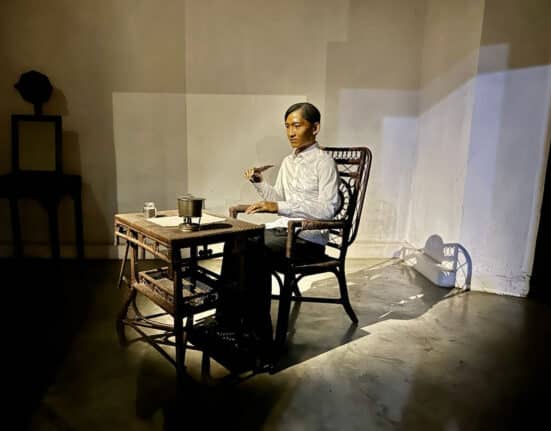ONE of the most famous Filipino nationalists under Spanish colonial rule was Jose Rizal. Along with other Filipino patriots, Rizal sounded the trumpets of nationalism to achieve freedom and access to education among Filipinos enslaved by the colonizers.
And in Fort Santiago, his last home before his execution, lies all the remaining memories of Rizal.
This 16th-century brick barracks has been in ruin since the 1945 Battle of Manila.
In this location, Jose Rizal was detained for 56 days. In 1953, the entire right wing of this building, which had previously functioned as a prison cell for Jose Rizal, was renovated and converted into a museum and shrine devoted to him.
It was renovated in 1998 for the Philippine Independence Centennial and again in 2014 to celebrate the country’s 100th year of independence.
SUGGESTED STORIES:
LIST: On-site class suspensions
ON-site or face-to-face classes in several areas in Metro Manila.
UNICEF: Measles and pertussis outbreaks a wake-up call for PH
As the world commemorates World Immunization Week, the Philippines is.
An urgent call to action: Philippines’ mass plastic waste production
ON Monday, April 22, Environment and Natural Resources Secretary Maria.
Upon entering the museum, visitors will see the timeline of Rizal’s life, including the key events that led to his martyrdom.

The Prison Cell

In this cell, Rizal detained a prisoner from November 3 until December 29, 1896, after being falsely charged with rebellion, sedition, and the formation of illegal societies.
This was Rizal’s cell while he was detained. The space that later served as Rizal’s cell had been used in the olden days as a carto de repuesto, a Spanish term for a storage area for military supplies and equipment.
A door at the opposite end of the room was locked. It wasn’t opened until after Rizal was handed his death sentence on December 29, 1896. On the same day, Rizal was transferred to the adobe barracks, where he awaited his death.
After reading the court sentence at 6 am on December 29, he was kept in an improvised chapel until his execution at 7:03 am on December 30, 1896, in Bagumbayan.
In this prison cell, he wrote his letter: Sa aking pamilya (To my family), which narrates Rizal’s plea for forgiveness.
The Hall of Banners
In this part of the museum, museum-goers can witness the reenactment of what happened during the trial of Jose Rizal.

Inside the room, it tells the story of how the trial of Jose Rizal took place on December 26, 1896, at 8:00 am at the Hall of Banners of the Cartel de España in Intramuros. The prosecution claimed that Rizal was the founder of a criminal and covert organization whose primary goal was a revolution and which would establish Rizal as the head of a free Philippines.
The Jose Rizal Museum documents showed that the defense argued that Rizal’s guilt was unproven because the evidence was based on his previous works and writings, which all predate the revolution, and that no tribunal should impose punishment for previous misdemeanors. Additionally, the defense argued that Rizal’s conviction should be overturned because the pieces of evidence were based on his past works and writings. Rizal continued to present his defense by providing 12 different reasons why he should be found innocent.
Life and Works of Rizal

Upon entering the museum’s second floor, visitors can watch an audio-visual presentation that summarizes the life of Rizal. Inside the room were paintings, ceramic wares, and seashells collected by Rizal during his exile in Dapitan, which will bring a nostalgic experience of the historical past of the martyr’s journey.

It also exhibits some of the copies of his works, the tickets he used during his journey as a doctor and a student abroad, and the actual vest used by Rizal during his fencing activities with Juan Luna in Paris.

Aside from the scenic and interactive experience inside the museum, visitors can also roam around the vicinity of the museum ruins with the newly-opened dungeons inside Fort Santiago.
Visiting students will pay P50 for students, persons with disabilities, and senior citizens, while a P75 fee is charged for adults.
The museum is open from 8 am to 5 pm.












